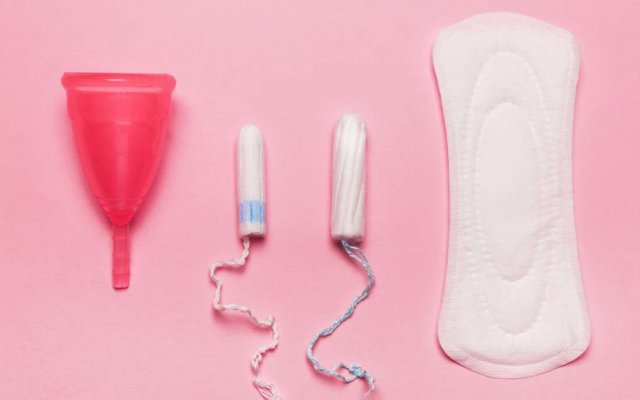Menstrual Cups vs. Pads And Tampons: How Do They Compare?
- Home
- Menstrual Cups vs. Pads And Tampons: How Do They Compare?

Menstrual Cups vs. Pads And Tampons: How Do They Compare?
 Menstrual cups are becoming more and more popular, especially in Western countries, primarily thanks to their reusability. But are they as safe as other disposable menstrual products? And how many people globally actually know about them? A new review attempts to offer some answers.
Menstrual cups are becoming more and more popular, especially in Western countries, primarily thanks to their reusability. But are they as safe as other disposable menstrual products? And how many people globally actually know about them? A new review attempts to offer some answers.
Menstrual cups have been around at least since 1932 when L. J. Goodard patented a “vaginal receptacle.” Like most menstrual cups of today, it was a bell-shaped object that a person could insert in their vaginal canal to collect menstrual blood.
Nowadays, manufacturers make these products out of soft, pliable, sterilized, and easy to clean medical-grade materials, such as silicone, rubber, latex, and elastomer.
Menstrual cups have become increasingly popular, thanks to the fact that a person can reuse them. They are also durable and can last for approximately 10 years.
Many individuals see menstrual cups as an eco-friendly product. Those who are committed to reducing waste created by the plastic, non-recyclable, and non-biodegradable materials present in disposable pads and tampons are choosing them over other menstrual hygiene products.
But whether or not they are as safe, less safe, or safer than the conventional disposable pads and tampons has remained an open question.
Now, a team from the Liverpool School of Tropical Medicine in the United Kingdom, in collaboration with other researchers from the U.K., Kenya, and India, have conducted a review of the medical studies and grey literature. Their review included studying conference abstracts, reports, and doctoral theses to find more about the usage and safety of menstrual cups.
The researchers also looked at how often educational websites and programs included information about menstrual cups alongside other menstrual hygiene products. Their findings now appear in the journal The Lancet Public Health.
Leakage rates similar between products
“Despite the fact that 1.9 billion women globally are of menstruating age — spending on average 65 days a year dealing with menstrual blood flow, few good quality studies exist that compare sanitary products,” notes the review’s senior author Prof. Penelope Phillips-Howard.
“We aimed to address this by summarising current knowledge about leakage, safety, and acceptability of menstrual cups, comparing them to other products where possible,” she explains.
For their review, the researchers looked at 43 studies with 3,319 participants between them. The cohorts came from different income countries; more specifically, 15 studies included cohorts from low and middle income countries, and 28 studies worked with participants from high income countries.
Four of these studies, totaling 293 participants, directly compared menstrual cups with tampons and disposable pads to see which ones were most likely to leak.
Three of these studies found that leakage rates were similar between menstrual cups and other products, while one study suggested that menstrual cups leaked significantly less.
Some studies indicated that leakage resulted for a variety of reasons, including abnormally heavy bleeding, a unique anatomy of the uterus, using a cup that was too small, placing the cup incorrectly, or not emptying it in time.
As many as 13 of the studies under review found that approximately 70% of the people using menstrual cups in the study were happy to continue using the product once they had familiarized themselves with how to use them correctly.
Familiarization was the part that many first time users seemed to find most difficult. Six qualitative studies showed that many participants needed to use menstrual cups over several cycles in order to become confident in using them.
The review also suggests that information about the menstrual cups and how to use them is often lacking, and many people remain unaware that these reusable products are even available.
Three studies working with cohorts from high income countries found that only 11–33% of people who use menstrual products knew menstrual cups existed. Moreover, of 69 educational websites from 27 countries that provide information about puberty and menstruation, only 30% mentioned menstrual cups at all.
Menstrual cups are safe to use
The researchers also looked at the extent to which menstrual cups were safe to use. They also analyzed adverse effects as reported by European, North American, and African populations.
Among participants in the available studies, only five reported experiencing toxic shock syndrome after using a menstrual cup. However, the researchers caution that it is unclear how many people actually use menstrual cups. Therefore, they were unable to compare risk rates for this event between menstrual cups and disposable menstrual products.
Four studies reported that using menstrual cups did not affect vaginal flora. Research that examined the vaginal canal and the cervix after a person used a menstrual cup showed that this product did not cause tissue damage.
There may, however, be some risks for women using intrauterine devices (IUDs). The researchers identified 13 cases in which removing the menstrual cup after use also dislodged the IUD.
Of the people who used a menstrual cup, five reported experiencing pain, three had vaginal wounds, six developed an allergy, and nine said they experienced urinary tract problems.
However, the researchers conclude that based on the available studies, menstrual cups are at least as safe and reliable as other menstrual hygiene products, and they urge educators to include them in their presentations:
“This systematic review suggests that menstrual cups can be an acceptable and safe option for menstrual hygiene in high-income, low-income, and middle-income countries but are not well known. Our findings can inform policymakers and programs that menstrual cups are an alternative to disposable sanitary products, even where water and sanitation facilities are poor. “
A word of warning
The review also issues a word of warning — many of the studies the authors looked at were not of sufficiently high quality.
Many studies did not feature in peer-review journals, others were too old and reported inaccurate data, and some focused on menstrual cups that are no longer available.
Moreover, the review authors write, “the outcomes identified in the reports and studies reviewed varied by different timepoints and designs,” meaning that results were inconsistent and difficult to compare.
Finally, “[r]ecruitment in observational studies was not representative or clear,” the review authors note. They also add that most studies relied on self-reporting, which can lead to overestimations and inaccuracies.
For these and other reasons, the investigators urge researchers to conduct more indepth studies regarding the safety and risks of using menstrual cup, as well as on their true environmental impact and their cost effectiveness.
Source: medicalnewstoday.com
Classic Ghana
Classic Ghana brings you into a fun world of arts, entertainment, fashion, beauty, photography, culture and all things in between. Let’s explore these together!


